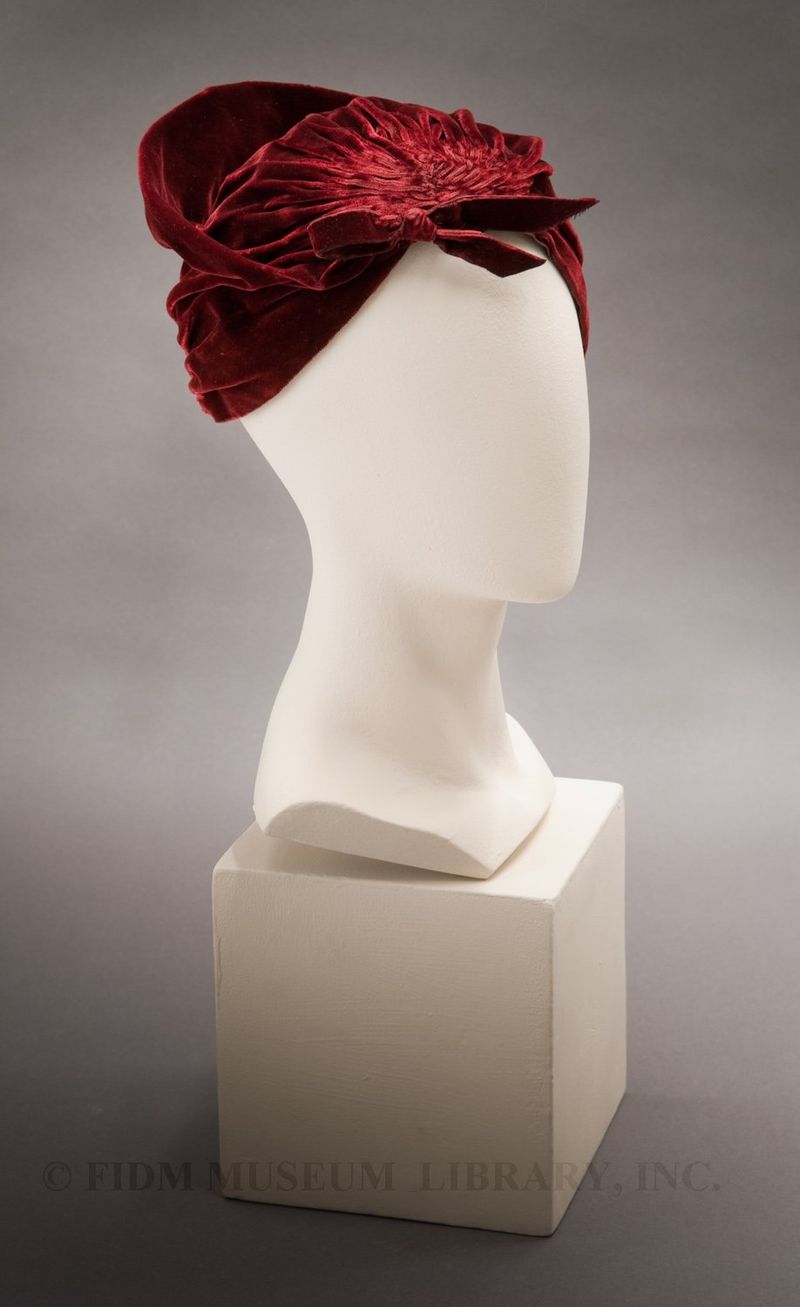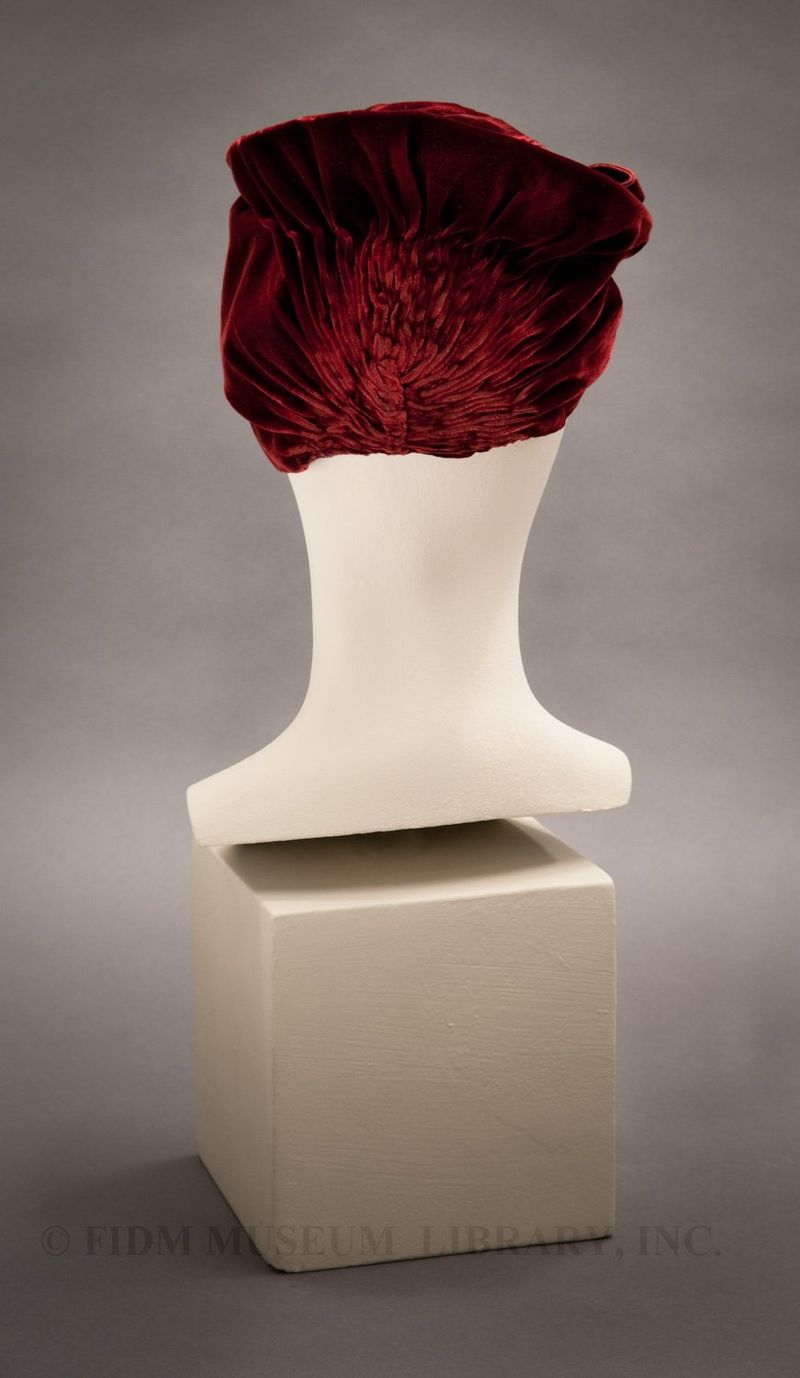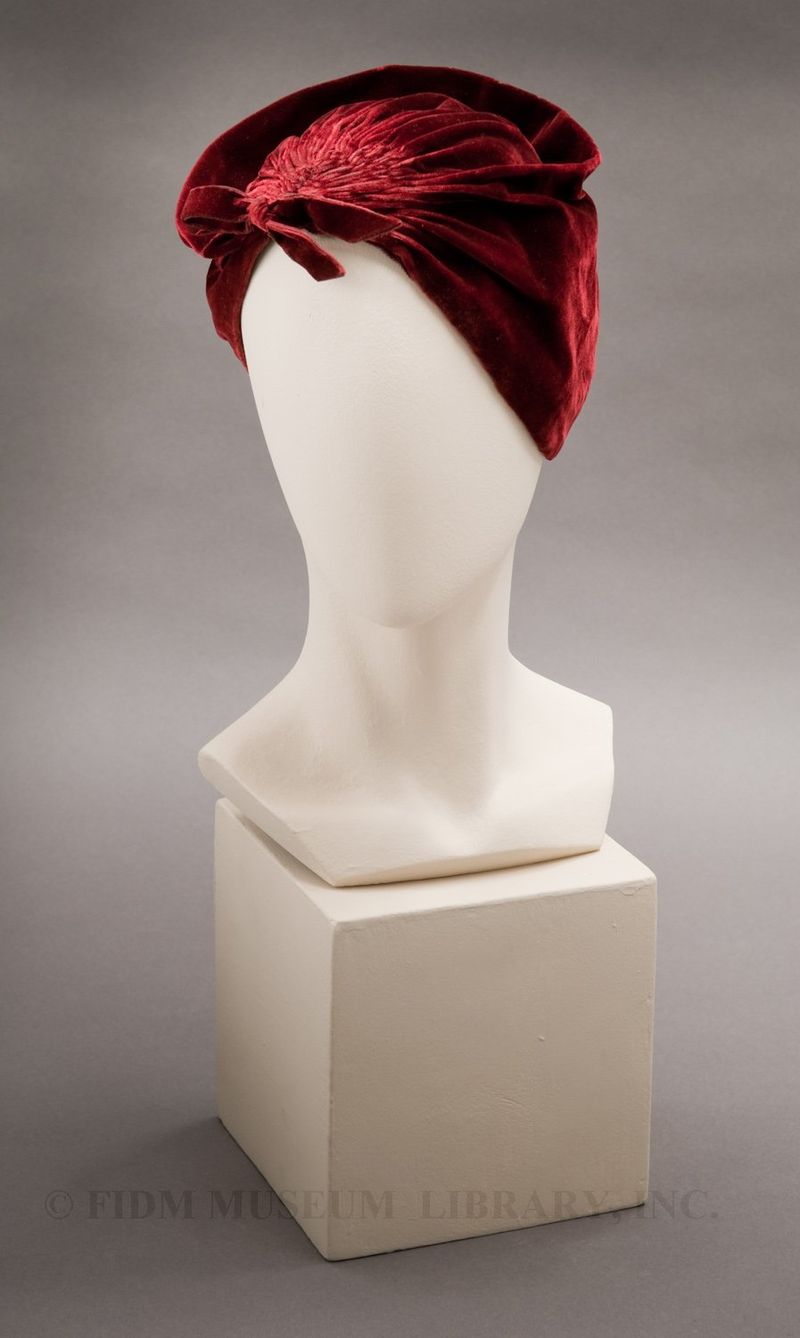The FIDM Museum blog will be on hiatus through early January 2015. In the meantime, enjoy weekly posts from the archives. To keep up with our current projects, find us on Facebook and Twitter, which will be updated regularly during the blog hiatus. We first posted this wine red velvet headwrap style hat by Blanche and Simone in February 2012.
**********
The 1931 Paris Exposition Coloniale Internationale was designed to showcase the artistic and cultural achievements of France's colonial possessions, while also demonstrating the mutual benefits of the colonial relationship. At the time of the Exposition, France's expansive colonial empire was second in size only to Britain's; by the 1930s, France and its colonies occupied "9.3 percent of the inhabited landmasses of the world."1 With colonies in Africa, south Asia, Oceania, and the Caribbean, French political rule and cultural influence affected nearly every corner of the globe. Opening in May 1931, the Colonial Exposition brought the arts, architecture and people of France's colonies to Paris for a six-month stay. A correspondent for American Vogue visited the Exposition and described it as being akin to a trip around the world: "you are suddenly transplanted to far colonial lands–to jungles of Africa, to palaces of Angkor, into whole villages of Congo huts, to Chinese temples."2 The Exposition was widely covered in the international press and very popular; over 33 million visitors, from France and beyond, attended the Exposition.
 Headwrap style hat
Headwrap style hat
1930-33
Blanche and Simone
Silk velvet
FIDM Museum Purchase
2009.5.21
In 1931, the New York Times declared, "The French Colonial exposition is giving a new impetus to Paris fashion."3 Though Paul Poiret had introduced orientalist creations as early as 1909/10, the popularity of the Colonial Exposition promoted a continued interest in appropriating and/or referencing non-western textiles, colors and silhouettes. In January 1931, several months before the Exposition opened its gates, excitement about the upcoming event inspired new textile designs and jewelry with "Cambodian, Moorish or Madagascar motifs."4 In spring 1931, Paris milliner Agnès designed Biskra, a small red hat decorated with white lace and named for the eponymous Algerian city. Once the Exposition opened, the fashion press continued to proclaim the Exposition's influence on the mood of French fashion.
Designed by the Paris milliners Blanche and Simone, the red velvet headwrap-style hat pictured here was probably inspired by the Colonial Exposition. Specifically, it may have been a reference to the headwraps worn by women in the French colonies of Martinique and Guadeloupe. Originating with African slaves brought to the new world, headwraps were common throughout all the Caribbean Islands and the American south. Though headwraps were typically worn by enslaved women (rarely men) and domestic servants, in the French colonies of Martinique and Guadeloupe, headwraps were also adopted by upper class mixed-race or caucasian women. If they weren't already familiar with the style, Blanche and Simone probably encountered women from the Caribbean wearing headwraps during a visit to the Colonial Exposition.
A headwrap is usually fashioned from a length of fabric that is wrapped around the head according to individual preference. In the case of this silk velvet hat, the gathers and folds that dictate the silhouette are carefully stitched in place. The half-bow at center front mimics the end points created when a headwrap is tied from a length of fabric. Like most hats of the early 1930s, the sharp angles of Blanche and Simone's hat frame and expose the face. This was a marked departure from the 1920s cloche, which was typically pulled low over the forehead. Because it is made of a richly colored silk velvet, this hat was probably intended for fall or winter wear.
Though the Exposition Coloniale Internationale was well-attended, it also had its critics. A coalition of left wing intellectuals organized the Exposition anti-impérialiste, or Anti-imperialist Exposition. This counter-exposition made the point that much of France's prosperity depended on the unequal economic and cultural relationships created by colonialism. At the time the Colonial Exposition opened in 1931, anti-colonial movements were beginning to form throughout the world. These movements would ultimately entangle France in violent conflicts in both Algeria and Indochina (Vietnam) and lead to the demise of France's extensive colonial empire.
1 Tolini Finamore, Michelle."Fashioning the Colonial at the Paris Expositions, 1925 and 1931." Fashion Theory: The Journal of Dress, Body & Culture 7.3-4, (September 2003): 345-360.
2 "Summer Travel: The Colonial International Exposition Of Paris." Vogue 1 June 1931: 43.
3 "By Radio from Paris." New York Times 24 May 1931: X11.
4 "By Radio from Paris." New York Times 11 Jan 1931: 116.



